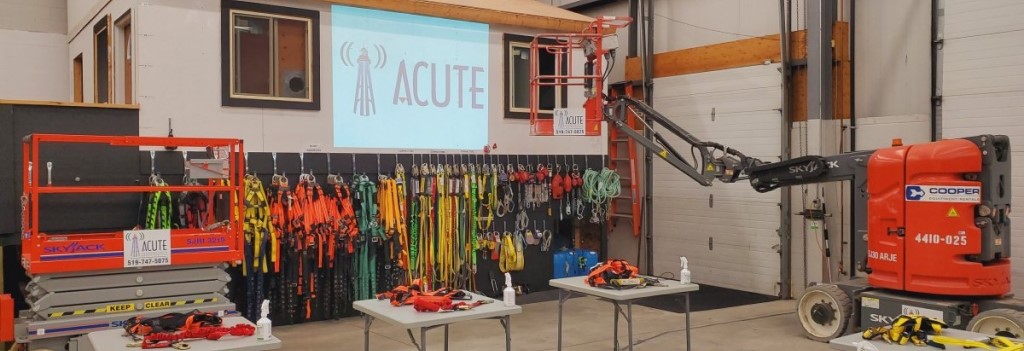How to Write a Complaint Letter About Another Employee

How to Write a Formal Complaint Letter About a Coworker
How to Write a Formal Complaint Letter About a Coworker
How to Write a Formal Complaint Letter About a Coworker
Managing conflict and complaints in any workplace keeps everyone, from workers to clients to supervisors, safe, content, and satisfied with their jobs. Oftentimes, workplaces can be hostile or unhealthy for employees due to a variety of reasons and the employer may not be aware. Learning how to write a formal complaint letter about a coworker can be a useful tool in difficult work environments.
If you are having trouble with a coworker and are wondering what steps to take, be sure to document your situation, confront the person, and, should none of this work, proceed to write a formal complaint letter. The first step is understanding what a hostile work situation is, what merits a formal complaint, and then how to handle the situation.
If you are facing a hostile work environment and still have questions or concerns after reading this article, please contact our consulting team here at ACUTE. Contact the experts at ACUTE today to learn more about their consulting services for workplace violence and harassment and see how they can help you and your workplace today. A safe working environment requires everyone to be on board.
Download a FREE template for writing a formal complaint letter
Simply enter your email address to download your sample letter that you can personalize to fit your situation.
By entering your email, you are giving permission to be added to our semi-monthly newsletter to receive helpful information on workplace safety topics. You can unsubscribe to this newsletter at any time.
Interested In ACUTE Consulting?

Trouble at work? Here's how to write a formal complaint letter about a coworker
How To Write A Formal Complaint Letter About A Coworker
Before we get to "how" it's important to start with "when". When should you resort to writing a formal complaint letter? There are two steps you should take before writing a letter: documenting and confronting. However, before any of that, it's important to know if the situation requires this kind of addressing. Here is a list of questions to ask yourself before proceeding with formal a complaint:
1. Is the work environment hostile?
A hostile work environment is one where a colleague's actions, communication, or behaviour make doing your job impossible. The behaviour that creates a hostile environment must be discriminatory in nature. In Ontario, this is regulated by the Ontario Human Rights Commission. With this understanding, we know that a coworker who is negative or talks loudly does not constitute a hostile work environment. However, a person who tells a sexually explicit joke is guilty of sexual harassment and creating a hostile work environment.

Behaviour that creates a hostile environment must be discriminatory in nature
2. Are my protected rights being discriminated against or attacked?
If someone verbally attacks your age, religion, gender, or race they may be guilty of creating a hostile work environment. Even "casual" comments can turn hostile very easily, often without employees even being aware. Any business, from a small office to a large corporation, can have hostile work environments.
3. Is this problem severely affecting your work?
Are you crying at your desk? Is this problem preventing you from getting your work done? If the answer is yes, proceed by confronting the issue. If someone touches you, threatens you, or exhibits any dangerous or harassing behaviours, go to human resources right away.

If someone exhibits any dangerous or harassing behaviours, go to human resources right away.
4 Warning Signs Of A Hostile Work Environment
1. Discrimination
One major sign of a hostile work environment is one where colleagues discriminate against each other, based on sex, age, race, religion, or even appearance. If you feel you are being discriminated against, it could be affecting your day-to-day work tasks or even limiting you from moving forward in your career.
2. Sexual harassment
This is any form of inappropriate behaviour which has sexual connotations. This could be anything from innuendoes to someone talking to you or touching your body inappropriately. In our digital age, this can also mean an employee who emails, texts, or digitally sends inappropriate images or messages.
If you have experienced sexual harassment check out the #metoo movement for support. Check out the TIME Magazine cover article on the Silence Breakers here.

Sexual harassment includes any form of inappropriate behavior which has sexual connotations
3. Intimidation
Intimidation can be either physical or verbal. A boss can intimidate an employee with threats, or employees could be subject to physical intimidation from other employees. Facing intimidation affects your day-to-day work, your self-esteem, and even your health.
4. Poor facilities
Failing to provide the right equipment can also create a physically hostile environment. If there is poor lighting, lack of furniture, lack of ventilation, or poor sanitary facilities you may be in a hostile work environment. If you are forced to handle or work with dangerous materials without proper protective gear then you are working in a dangerous, hostile environment.

Not providing the right equipment can create a physically hostile environment
Steps To Writing A Formal Complaint Letter
1. Always try to resolve the conflict amicably before proceeding to a formal complaint letter.
Be sure to document the conflict well, and try to confront the person (as long as there is no immediate danger) before writing a letter. If this isn't an option due to safety, simply begin with writing a letter. If you have attempted to resolve the conflict through confrontation without success, proceed with writing your letter.
2. Write down the details about the harassment.
Your letter will be going to the human resources manager or department (depending on the size of your organization) and you will want to give them as much information as possible. Be sure to include:
- Who harassed you and their relationship with you
- When each instance occurred – date, time, and location
- What the person said or did and how you responded
- Who witnessed this situation? Write down their name and title
- What tangible evidence do you have of the situation? Include any e-mails, letters, notes, voicemails, etc.

Your letter should include the date, time, and location of the incident
3. Format your letter professionally.
Always write complaint letters in standard business letter form. Find the details of the standard business letter format here. Be sure to include your name, address, title, and information as well as that of the person you are writing to.
4. Introduce yourself and your purpose.
In the first paragraph, you will want to give the person reading your letter the reason you are writing to them. Identify that you are filing a formal complaint about harassment and against whom you are filing this complaint.
5. Include details about the facts of the harassment.
Be clear and provide adequate information. You want to be sure that the human resources manager can see that there is a problem that needs further investigation. Describe the incidents in detail and include every occurrence in the letter. Be sure to stick to the facts – don't include assumptions, generalizations, or accusations.

Your letter should describe the incidents in detail
6. Explain how you responded.
This is important because how you respond can have a big impact on the results. Be sure to state in your letter whether you responded, and what you said and did in every instance. State if you tried to resolve the issue by confronting the person. Be sure to not be afraid of addressing harassment. It is always better to confront, attempt to resolve, and report than to ignore. Finally, be sure to explain how the harassment made you feel and how it affected your work.
7. Propose a solution.
State what you want to happen from human resources, whether you want to be transferred to a different department, you want an investigation to happen, etc. This doesn't mean that those are the actions human resources will take, however it does show them your desired outcome.
8. Sign and send your letter.
Be sure to make and keep a copy for your records of both your letter and supporting documentation.

You should keep a copy of your letter for your own records

Stay Safe At Work With ACUTE!
Hands-on, practical consulting is the best way to keep employers and workers safe in the workplace! Check out ACUTE consulting services here to learn more about internal relations consulting. ACUTE is dedicated to workplace safety and understands the importance of diffusing hostile situations. If you have questions about the legislation and how this will impact your workplace, get in touch with ACUTE today. Why get workplace safety training with ACUTE? Here are just some of the benefits of working with ACUTE.

- Open Door Instructor-Student Partnership – ACUTE's training services emphasize client participation. Staff foster relationships with clients and serve as a touchstone for advice anytime moving forward.
- Serving Your Team and Industry –With a vast array of clients in the manufacturing, construction, health, academic, and government sectors, ACUTE brings the best safety practices from across the spectrum to your workplace.
- 100 Years Combined Experience –ACUTE provides comprehensive health and safety training, on-site safety services, and consulting services. With over 100 years of combined experience, our company staff offer more than theoretical or abstract ideas. ACUTE offers solutions.
- Track Record of Success – ACUTE is rated 4.9/5 stars on Google reviews, demonstrating a commitment to our clients, quality, and passion for training.
"We have relied on ACUTE for years to train our staff and
keep them safe on the job site."
– Bob, Millwrighting Company –Read More Testimonials Here!
Click here to see what training courses we have at ACUTE orcontact us today for quality training in your workplace or on-site at ACUTE's proven training facilities!
ACUTE is located in Waterloo, Ontario, and services customers from cities such as Toronto, Mississauga, Brampton, Hamilton, Milton, Kitchener, London, Guelph, and others across Ontario.
Related Posts
How to Write a Complaint Letter About Another Employee
Source: https://acuteservices.com/write-formal-complaint-letter-coworker/
Belum ada Komentar untuk "How to Write a Complaint Letter About Another Employee"
Posting Komentar